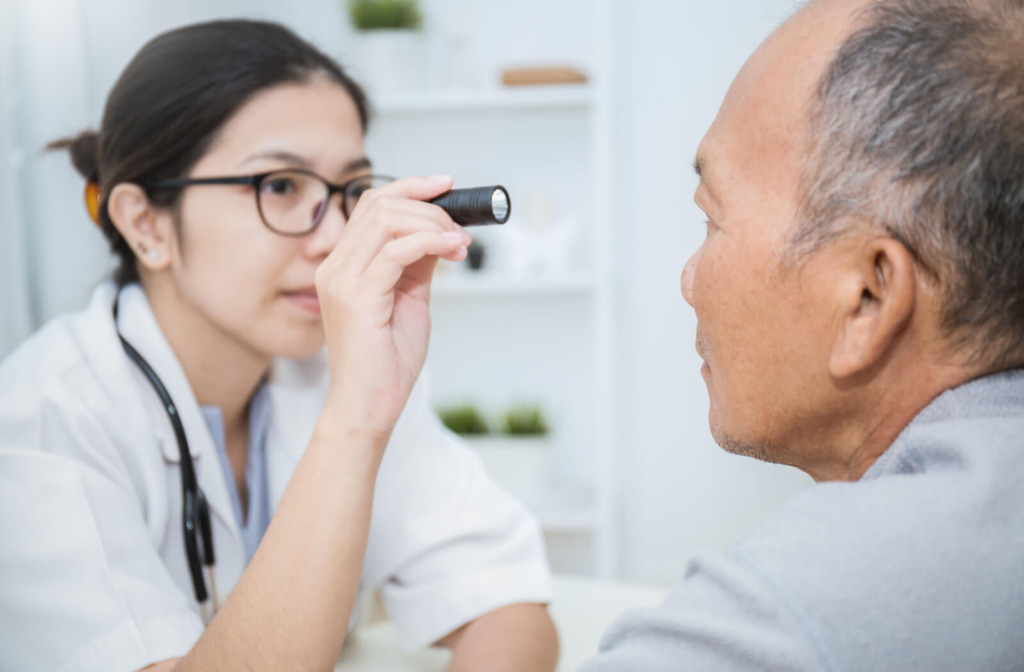Pink eye, also known as conjunctivitis, is an infection that causes inflammation of the eye’s outer membrane. It can result from bacteria, viruses, or allergies, making the eyes reddish or pinkish.
If you’re unsure of your symptoms and their cause, visit your eye doctor for an adult or children’s eye exam to diagnose or rule out pink eye. Because pink eye is highly contagious, if someone in your household has it, you’ll need to take steps to prevent the infection from spreading. But how do you do this?
Reduce your risk of getting pink eye by washing your hands, avoiding touching your eyes with unwashed hands, and avoiding sharing items with the infected person.
What Is Pink Eye?
Pink eye is inflammation of the conjunctiva (the transparent outer membrane that lines the eyelid and eyeball). The red or pink colour in the eyes comes from blood vessels in the conjunctiva that become swollen and irritated.
Pink eye rarely affects your vision. However, because it’s can be contagious, it’s best to get an early diagnosis to help prevent the spread and start treatment to minimize discomfort.
Symptoms of pink eye can include:
- Redness or pink in one or both eyes
- Itchiness in one or both eyes
- A gritty feeling in one or both eyes
- A discharge in one or both eyes
- Watery eyes
- Light sensitivity
Causes of Pink Eye
The most common cause of pink eye is viral and bacterial conjunctivitis. Both types are very contagious. Allergic conjunctivitis is not contagious, as it occurs in response to an allergen such as pollen.
Types of Pink Eye
There are 3 main types of pink eye:
- Viral pink eye is caused by common cold viruses. It can occur with a cold that spreads from your respiratory tract to your eyes or if someone has an upper respiratory infection and coughs or sneezes near you.
- Bacterial pink eye is caused by staphylococcal or streptococcal bacteria. It can occur when you touch your eyes with unclean hands, are in contact with someone who has pink eye, or if you share personal items, like makeup, with someone who has bacterial pink eye.
- Allergic pink eye is caused by allergies. If you have seasonal allergies, you can get allergic pink eye when you come in contact with a substance you’re allergic to.
Your risk of contracting pink eye is high if:
- You’re in contact with someone who has the viral or bacterial form of pink eye.
- You come in contact with something you’re allergic to.
- You use contact lenses, such as extended-wear lenses that aren’t cleaned adequately or wear someone else’s contact lenses.
How to Avoid Getting Pink Eye from Someone in Your Home
If someone in your home first shows symptoms of pink eye, they can be contagious for up to 2 weeks. And if it does spread, the incubation period, or the period from when you get infected to when symptoms appear, is 24 to 48 hours.
With viral and bacterial conjunctivitis, the bacteria and virus can spread from touching surfaces to close contact. Avoiding these and other measures can help to prevent getting pink eye.
Wash Your Hands
One of the easiest ways to prevent the spread of pink eye is to wash your hands frequently with soap and warm water for at least 20 seconds after contact with an infected person, helping them with eye drops or putting their linens in the washing machine.
Don’t Share Personal Items
Pink eye can spread through personal items such as towels, washcloths, and makeup. Don’t share towels, washcloths, eye makeup, makeup brushes, eye drops, glasses, contact lenses, contact lens cases, or other personal items with an infected person.
Clean Common Areas
Pink eye can also spread through contact with contaminated surfaces. It can help to clean common areas such as doorknobs, light switches, and countertops regularly with disinfectant.
Keep Your Hands Away from Your Face
You can easily contract pink eye by touching your eyes with contaminated hands. If you need to touch or rub your eyes, wash your hands first.
Avoid Close Contact
Pink eye can spread through close contact with infected individuals. Avoid close contact, such as hugs, kisses, and handshakes. Pink eye can also spread through coughing and sneezing. If possible, sleep in a separate bedroom.
Prevent Reinfection
If someone in your house has pink eye, it doesn’t mean they can’t get it again. Here is what they can do to help avoid reinfection:
- Discard used eye, or face makeup and makeup brushes.
- Throw away disposable contact lenses, contact lens cases, and contact lens solutions.
- Thoroughly clean extended-wear lenses as directed.
- Thoroughly clean eyeglasses.

Protect Yourself from Pink Eye
Pink eye is a highly contagious infection that can spread through personal contact and contaminated surfaces if someone in your house has it. You can reduce your risk of contracting it by taking simple steps such as washing your hands frequently and avoiding close contact. Make an appointment with Queensway Optometric Centre if you or others in your family show symptoms of pink eye, including pain, blurry vision, and sensitivity to light.


